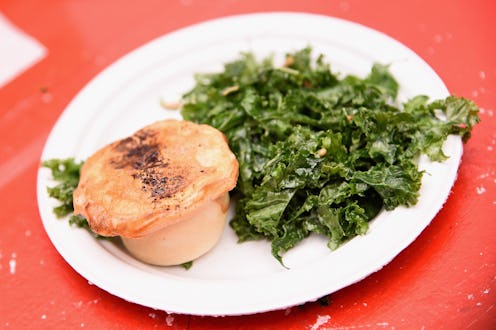Life
Kale Isn't So Natural After All...

Bad news for natural food lovers: kale is actually a genetically modified food. Yep. According to Smithsonian Magazine, we've been genetically modifying a majority of our food staples, including kale, for centuries (technically speaking).
Smithsonian notes that, ever since the introduction of agriculture, farmers have been "genetically modifying" plants and animals — and by genetically modifying, I mean "selectively breeding" said plants and animals. So technically, very few of the foods we still eat are considered "natural" any more. Feeling confused (and perhaps conflicted) over the matter? Here are a few examples of surprising genetically modified foods you've probably eaten in the last 24 hours:
1. Kale
Smithsonian Magazine notes that kale — an essential on any basic bitch's grocery list — is actually distant relative of wild cabbage. And how did we turn wild cabbage into kale? With mutation and selective breeding, of course. Smithsonian notes that after breeding a mutated variety of the cabbage with "plants with desired genetic traits," kale was born.
2. Grapefruits
Grapefruits, a fruit recently made popular for its "DTF" properties, are actually the result of what happens when you cross an orange with a pomelo, literally. They came around in the 18th century, but the pink kind didn't show up until the 20th, thanks to a color mutation.
3. Almonds
Did you know that wild, bitter almonds contain cyanide? As in poison? Thanks to a mutation, the chemicals that produce cyanide were eliminated from the mix. According to LiveStrong, the almonds we eat are actually sweet almonds, a relative of bitter almonds that don't pose a risk. Oh, and yes, almonds of the bitter variety still exist, but fortunately they're only used for oil (the process for which removes the poison).
To learn about more modified and mutated foods, head over to Smithsonianmag.com!